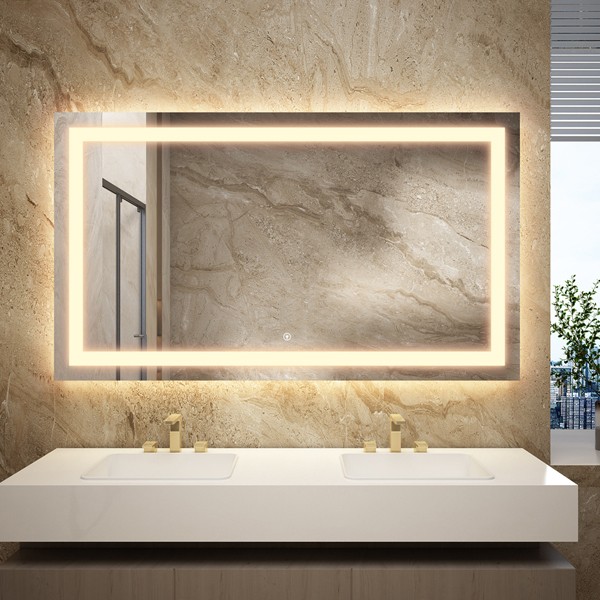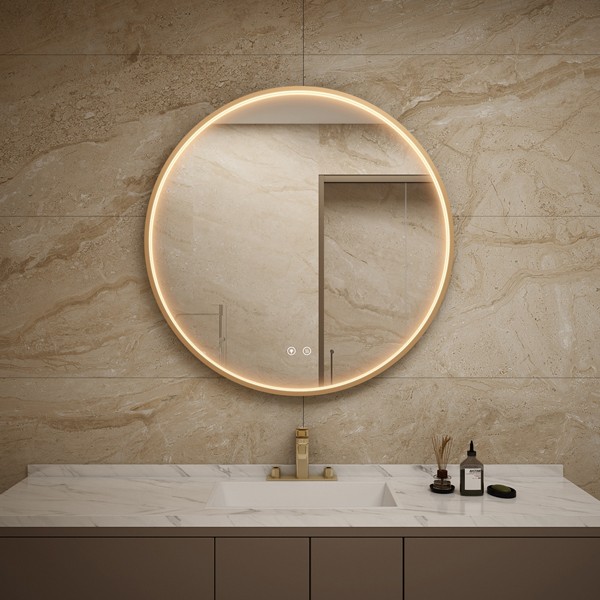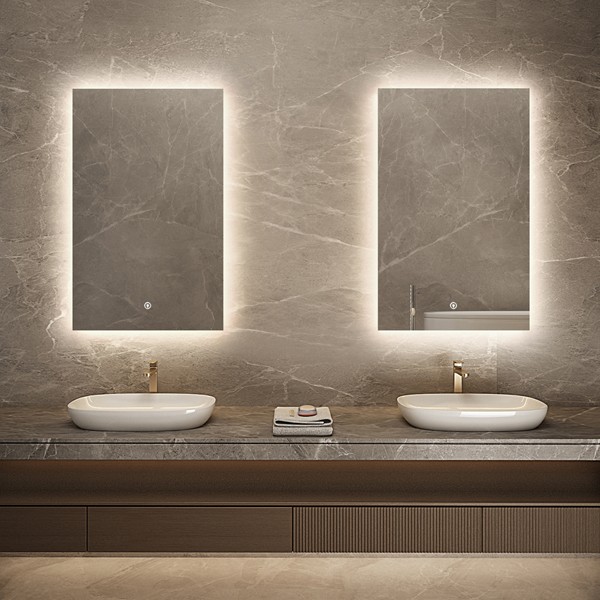Do you ever see yourself in the mirror and think, "Wow, I actually look great today," but then in photos, you barely recognize yourself? Don't worry, you're not the only one who experiences this confusion.
There are several possible reasons why you may appear differently in the mirror versus the camera on your phone. In the following paragraph, we will explain each one.
Key Takeaways
-
Mirrors offer instant feedback, enabling you to make adjustments and perfect your appearance in real-time for the best possible version of yourself.
-
A photo captures a single moment in time, but often without the chance for small adjustments.
-
When choosing a mirror and camera lens, keep in mind that they can affect your appearance. A flat mirror will show your true self, though a bit flipped, while a distorted one can alter your features. Lower quality lenses can also cause a warping effect.

The Science of Reflection
Understanding Mirrors and Reflection
This mirror is made of high-quality pure glass and a flat reflective silver layer that reflects light rays without causing any distortions to real-life figures. Its top-notch quality is due to the purity, flatness, and thickness of the glass, as well as the type of reflective coating, protective layer, and backing structure used.
The Role of Light
The CRI, or color rendering index, is crucial in evaluating light source quality. Higher CRI lights have a fuller spectrum, capturing colors more accurately.
Upgrade your lighting to high-quality LED with a CRI of 95, and say goodbye to the color changes that occur under fluorescent lights (which have a CRI of only 70). Enjoy the true colors of your new clothes with this simple change.
When using mirrors and cameras, it's important to remember to choose high CRI light sources for the best results.
Perception and Psychology
Mirror Image vs. Photographs
The buyer is more likely to accept things that they are familiar with.
See yourself in a whole new way with our mirrors, which reflect an image that may appear reversed but is actually how others see you. This phenomenon, known as the mere-exposure effect, can lead to a preference for familiarity.
Sometimes, seeing a photograph of ourselves can be jarring because it captures us as the world sees us, rather than the familiar reversed image we are used to. This contrast can be unsettling.
The camera may cause distortions in your appearance due to different lens types, angles, and lighting.

Discover the Psychological Impact of Seeing Your Reflection.
- The psychological phenomenon causes us to prefer images in mirrors over pictures.
- If you tend to smile in the mirror, it can lead to increased happiness.
- Experts in psychology suggest that regularly seeing our own reflection can influence our self-confidence and emotional well-being. Whether it's a positive or negative impact, it is a significant factor to consider.
- Your mirror not only reflects your outer appearance but also your inner self, something that pictures taken by camera cannot capture.
Technical Differences
Camera vs. Mirror
Discover a different perspective of yourself through mirrors, one that you see every day and feel at ease with. Cameras may capture you in a 2D form, but mirrors offer a more dynamic 3D view.
Lenses and Distortion
Consider adding a wide-angle lens to your camera for capturing landscapes. However, for close-up selfies, be aware that these lenses can cause slight distortion that may make features look larger or broader.
Discover how different lenses can greatly alter your perspective with ease.
-
Standard lenses (about 50mm) emulate the natural view of your beautiful eyes.
-
With wide-angle lenses (less than 50mm), you'll get a funhouse mirror effect that can distort your features, so be careful!

Guidelines for Appearing Photogenic
Presenting your best self in photos often hinges on confidence, preparedness, and technique. To ensure you shine in your photos, here are some helpful tips to keep in mind:
-
Practice Good Posture: Maintain good posture by standing up straight, pulling your shoulders back and down. This simple tip can enhance your appearance in photos.
-
Find Your Angles: When taking photos, it's important to find your best angle. Instead of facing the camera head-on, try slightly turning your body for a more dynamic and flattering pose.
-
Smile Genuinely: Think of something that makes you happy to evoke a genuine smile. A fake smile can look stiff and awkward in photos.
-
Use Soft Lighting: Enhance the appearance of your skin and minimize harsh shadows with soft, diffused lighting. The golden hour, when natural light is at its most flattering, can provide an extra boost.
-
Dress for Success: Choose clothing that boosts your confidence and comfort. Opt for solid colors instead of busy patterns, which can divert attention away from your face.
-
Makeup and Grooming: Enhance your complexion and highlight your best features with a simple touch of makeup. For gentlemen, keeping facial hair groomed and controlling shine can have a notable impact.
-
Check Your Background:Choosing a simple and complementary background is essential to maintaining the focus on you. Avoid a cluttered or distracting background that may divert attention away from you.
 Shanghai Divas Glass Co.,Ltd
Shanghai Divas Glass Co.,Ltd
